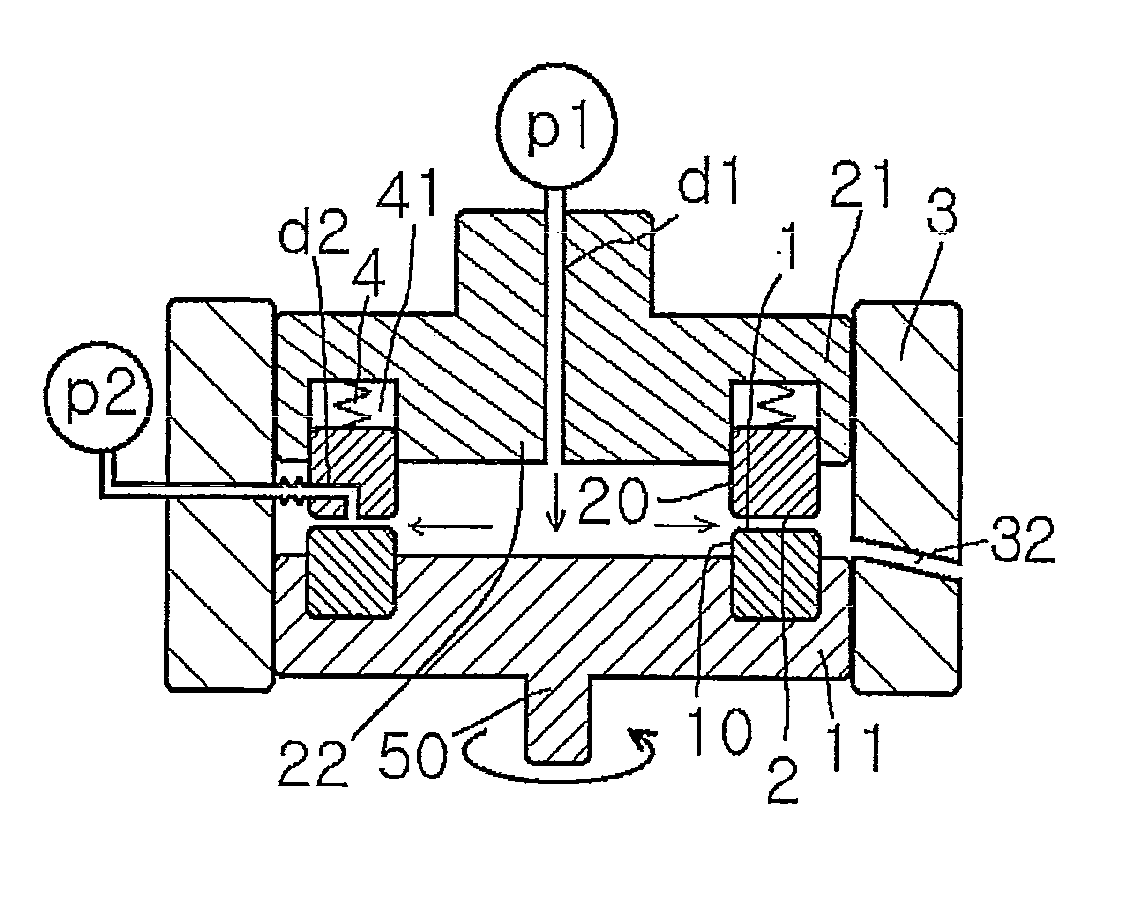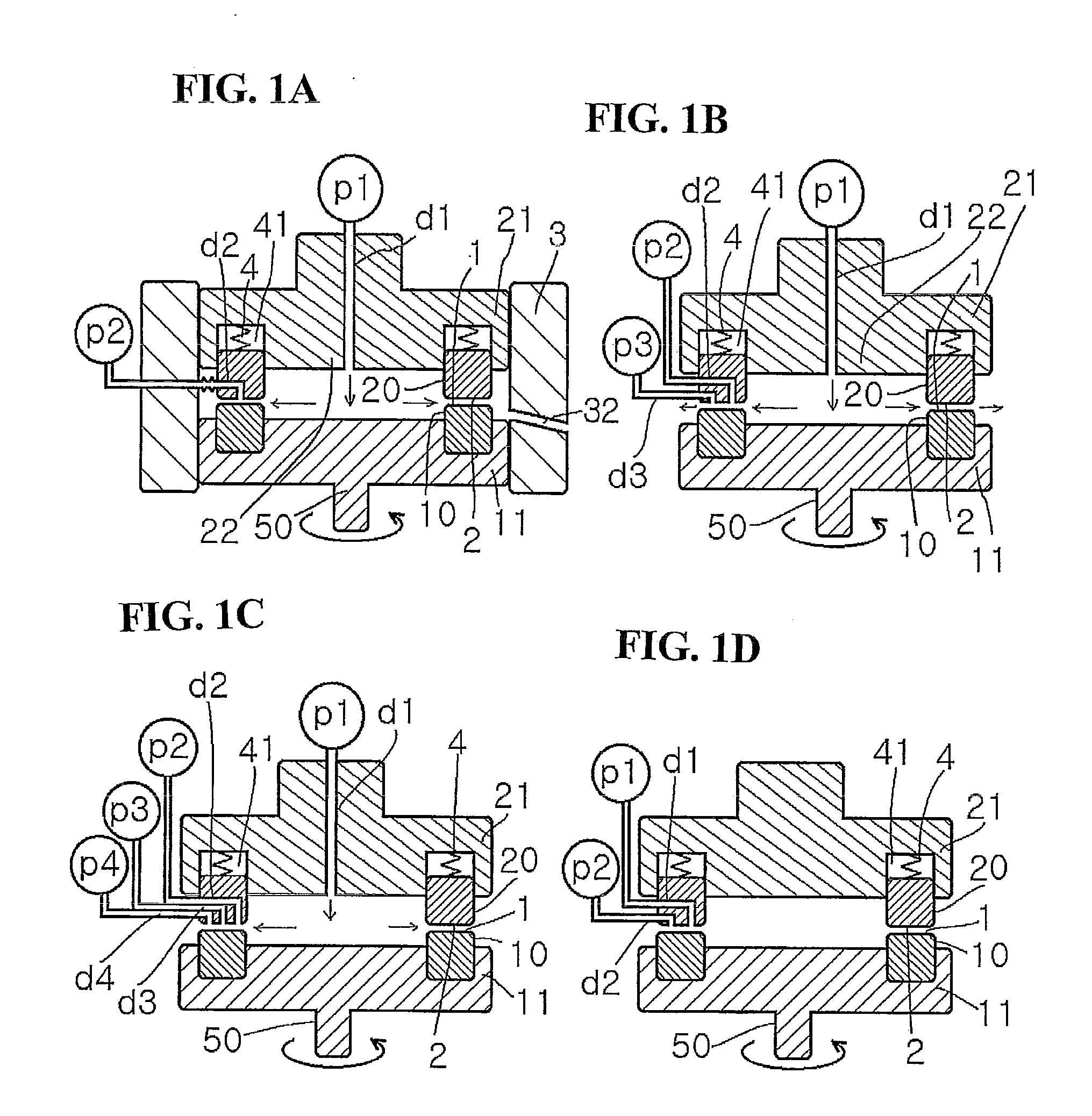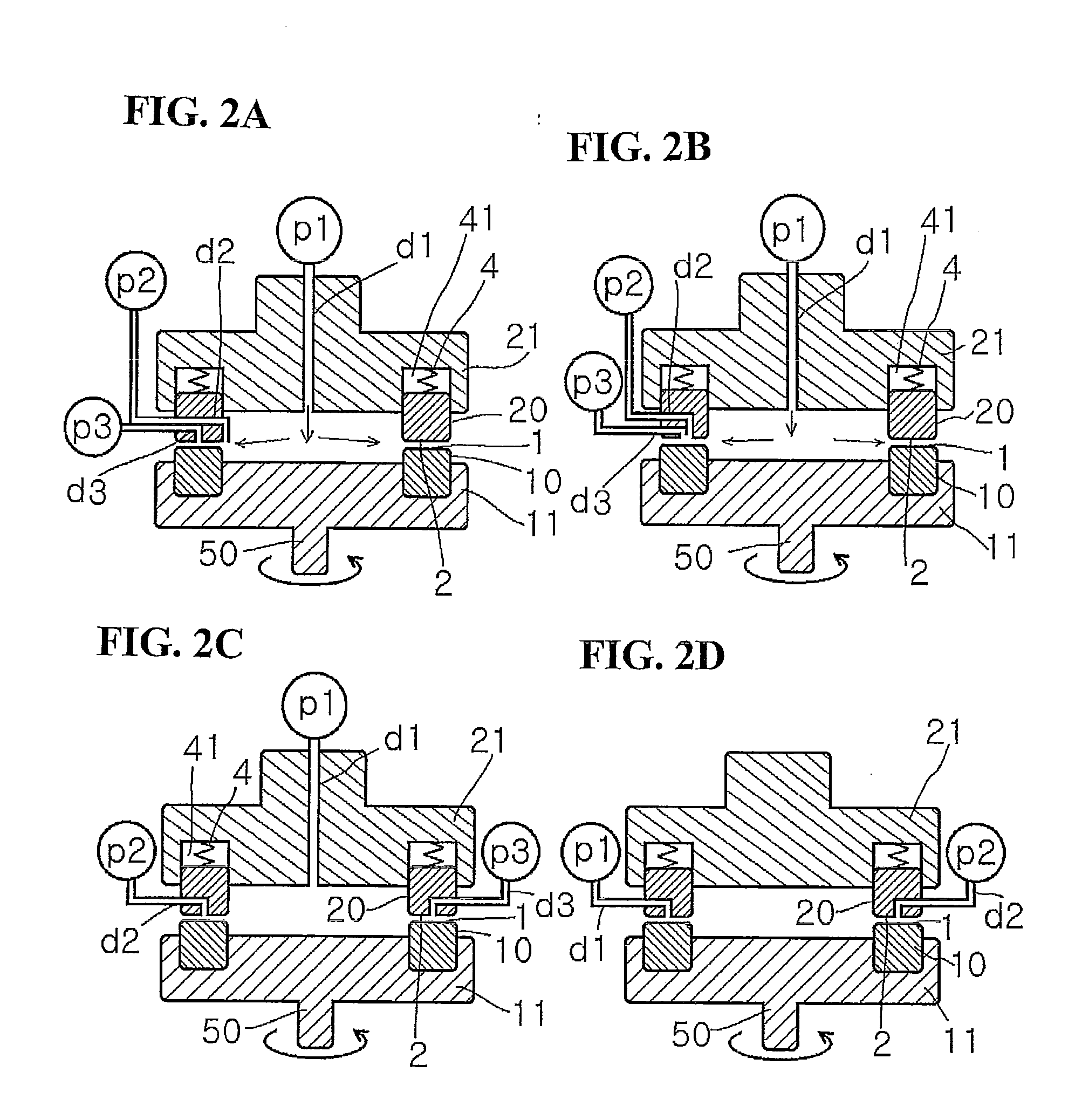Method for producing magnetic microparticles, magnetic micropaticles obtained therefrom, magnetic fluid, and method for producing magnetic product
- Summary
- Abstract
- Description
- Claims
- Application Information
AI Technical Summary
Benefits of technology
Problems solved by technology
Method used
Image
Examples
example 1
[0418]While 10% hydrazine aqueous solution was sent as a first fluid from the center at a supply pressure / back pressure of 0.02 MPa / 0.01 MPa, at a revolution number of 1000 rpm and at a sending solution temperature of 80° C., an aqueous solution of 20% ferrous sulfate / 18% copper sulfate / 2% BYK-190 (manufactured by BYK-Chemie), just after adjusted to pH 12 with ammonia water, was introduced at a rate of 10 ml / min. as a second fluid into the space between the processing surfaces 1 and 2. An aqueous iron-copper alloy colloidal solution, that is, a magnetic fluid, was discharged from the processing surfaces 1 and 2.
[0419]Then, impurities were removed with a dialysis tube from the resulting aqueous iron-copper alloy colloidal solution, and iron-copper alloy microparticles in this dispersion were observed with a transmission electron microscope (TEM). One hundred particles were selected at random therefrom, and their measured average primary particle size was 9.3 nm. The compounding ratio...
example 2
[0420]While an aqueous solution of 0.3 mol / L caustic soda (sodium hydroxide) was sent as a first fluid from the center at a supply pressure / back pressure of 0.40 MPa / 0.01 MPa, at a revolution number of 500 rpm and at a sending solution temperature of 95° C., a starting metal salt mixture wherein ferric chloride hexahydrate, cobalt chloride hexahydrate, nickel chloride hexahydrate, and chromium chloride hexahydrate, that is, 0.25 mol / l Fe3+ aqueous solution, 0.10 mol / Co2+ aqueous solution, 0.10 mol / l Ni2+ aqueous solution, and 0.10 mol / l Cr3+ aqueous solution were mixed such that Fe3+ / Co2+ / Ni2+ / Cr3+ became 2 / 1 / 0.3 / 0.3, was introduced at a rate of 10 ml / min. as a second fluid into the space between the processing surfaces 1 and 2. A black microparticle dispersion, that is, a magnetic fluid, was discharged from the processing surfaces.
[0421]As a result of elementary analysis of precipitates obtained by filtering a part of the obtained black microparticle dispersion, Fe was 47.6%, Co 14...
example 3
[0423]An alkane solution having aerosol OT, decane and 2 ml oleylamine mixed therein was added to and mixed with a reducing agent aqueous solution having NaBH4 dissolved in water (deoxygenation: 0.1 mg / l or less), and the resulting reverse micellar solution (0.9% NaBH4 / 18.8% deoxygenated water / 12.7% aerosol OT / 65.9% decane / 1.7% oleylamine) was sent as a first fluid from the center at a supply pressure / back pressure of 0.10 MPa / 0.01 MPa, at a revolution number of 1000 rpm and a sending solution temperature of 50° C. An alkane solution having aerosol OT and decane mixed therein was added to and mixed with a metal salt aqueous solution prepared by dissolving iron triammonium trioxalate (Fe (NH4)3(C2O4)3) and potassium chloroplatinate (K2PtCl4) in water (deoxygenated), and the resulting reverse micellar solution (1.1% (Fe (NH4)3(C2O4)3 / 0.9 K2PtCl4 / 18.9% deoxygenated water / 12.8% aerosol OT / 66.3% decane) was introduced as a second fluid at a rate of 10 ml / min. into the space between the p...
PUM
| Property | Measurement | Unit |
|---|---|---|
| Particle size | aaaaa | aaaaa |
| Particle size | aaaaa | aaaaa |
| Thickness | aaaaa | aaaaa |
Abstract
Description
Claims
Application Information
 Login to View More
Login to View More - R&D
- Intellectual Property
- Life Sciences
- Materials
- Tech Scout
- Unparalleled Data Quality
- Higher Quality Content
- 60% Fewer Hallucinations
Browse by: Latest US Patents, China's latest patents, Technical Efficacy Thesaurus, Application Domain, Technology Topic, Popular Technical Reports.
© 2025 PatSnap. All rights reserved.Legal|Privacy policy|Modern Slavery Act Transparency Statement|Sitemap|About US| Contact US: help@patsnap.com



